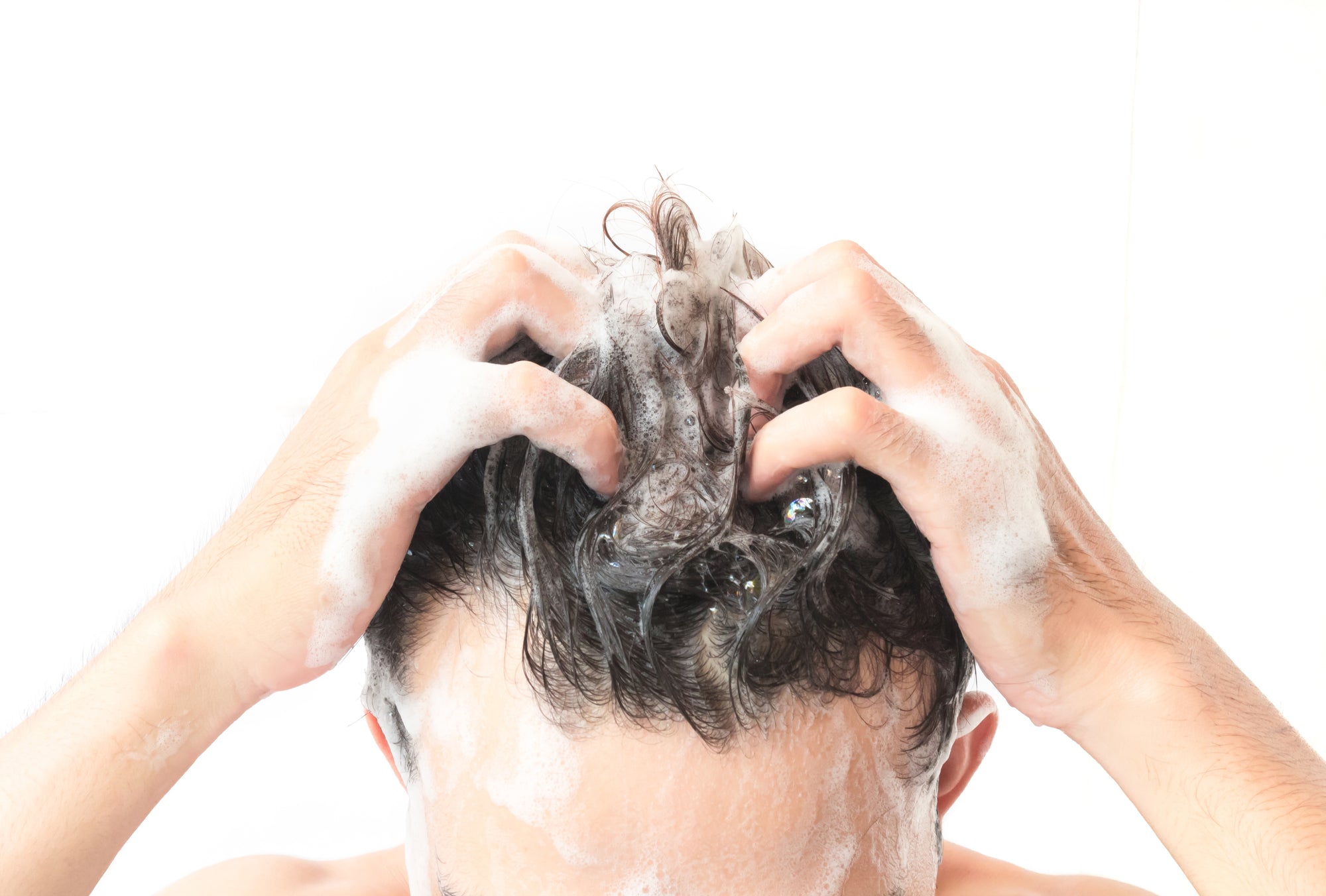

· By Customer Team
6 Causes of an Oily Scalp (and What to Do About It)
Having oil on your scalp is normal—in fact, you need it to protect your skin and support your hair. But if your scalp gets super oily, are your grooming habits to blame? Or is Mother Nature the culprit behind your greasy dome?
Let’s get to the bottom of what’s sending your scalp oil production into overdrive and how you can get it under control.
The Science of Scalp Oil
Most of what makes your scalp look oily is sebum: a mixture of fatty acids, sugars, waxes, and other chemicals. Think of it as your body’s natural moisturizer.
Sebum is produced by your sebaceous glands, which are attached to hair follicles beneath the skin. Your face and scalp have more sebaceous glands than any other area of the body, so if you produce a lot of sebum, your head is likely the first place it will show.
In addition to sebum, the stuff we call “oil” on the scalp also contains sweat, dead skin cells, hair products, and other gunk builds up throughout the day.
Bottom line: scalp oil is your body’s natural protective barrier against the elements, but sometimes it makes way more than you need. Let’s find out why.
What Causes an Oily Scalp?
There are many factors that determine how oily (or dry) your scalp is, ranging from your genetics to your hair care products. Let’s take a look at six common causes of an oily scalp. Keep in mind, there can be some overlap here.
Harsh Shampoo
A lot of people with oily scalps try to scrub away their problems with shampoo. This seems intuitive, and it might work temporarily. But when your body senses a lack of moisture, it can overcompensate with even more sebum than before. We call this the shampoo cycle:

It’s a vicious cycle that shampoos can’t fix. In fact, the sulfates that old-school shampoos use to lather up are notorious for drying out your scalp, which will inevitably become oily when your body over-corrects.
Hair Type
People with fine, straight hair may have a more oily scalp than people with thick, wavy, or curly hair. That’s because the sebum doesn’t have as much texture to cling to, making the scalp look oily.
Hair Products
The products you use to treat and style your hair probably aren’t causing a hypersecretion of sebum. However, they can cause your scalp to look shiny. Gels, mousses, styling creams, conditioners, and hair oils (obviously) can all give your scalp a greasy look.
Hormones
Sebum secretion is regulated by your hormones, like testosterone. Accordingly, higher hormone levels may result in an oily scalp. Sebum production can increase up to 500% during puberty, which is why younger males tend to have more oily skin than their female counterparts. (You can blame that for your acne, too).
Genetics
Some guys just naturally produce more scalp oil than others. It doesn’t mean you’re dirty—it’s just the way you’re wired. If you fall into this category, it’s nothing to be ashamed of (in fact, it’s probably better than having dry, itchy skin).
Seborrheic Dermatitis
Seborrheic dermatitis is a skin condition that causes scaly, itchy patches in areas with a high concentration of sebaceous glands, like the scalp. These patches often appear greasy, and when they dry up and fall off the scalp they look like white flakes.
Seborrheic dermatitis is generally harmless and common, affecting about 11% of people, according to Cleveland Clinic. The exact cause of the condition isn’t clear, but Cleveland Clinic notes that oily skin and increased levels of sebum can trigger or worsen it.
How to Manage Your Oily Scalp
You can’t rewrite your genetic code, but you can make modifications to your hair care routine that reduce your odds of an oily scalp. Here are a few tips to consider.
Quit Shampoo
As we mentioned earlier, washing with shampoo can do more harm than good for an oily scalp. However, you still need your hair to look, feel, and smell fresh.
That’s why we made Modern Mammals: a shampoo alternative for guys that solves problems like dry hair, itchy scalp, and excess oil production. Rather than blasting your hair with harsh chemicals or coating it with conditioner, our formula offers complete scalp care while preserving your hair’s natural moisture.
Life is full of compromises, but you shouldn’t have to choose between clean hair and a healthy scalp.
Wash Your Hair with Cool Water
A steamy shower might soothe your mind, but it bothers your scalp. Hot water melts away the natural oils on your head, triggering your sebaceous glands to send more oil to the surface. Instead, rinse your hair with cool water. It will help your sebaceous glands chill out—literally.
Swap Your Styling Products
Gels, creams, and pomades can build up on your scalp and make it look oily. If you suspect that’s the issue, make sure you wash your hair thoroughly or use styling products that don’t have silicones, which can give your hair a glossy look.
Talk to a Dermatologist
If home remedies can’t control your oily scalp, or you have accompanying symptoms like chronically itchy or irritated skin, it might be time for a trip to the derm. They can help you identify the root cause of the problem and prescribe medication, if necessary.
It’s All About Balance
Oil on your scalp is like icing on a cupcake: if there’s not enough, it feels off; if there’s too much, it ruins the experience. That’s why it’s essential to wash your hair with a rinse that won’t jack up your scalp’s pH balance and natural oils (we’re looking at you, shampoo.)
